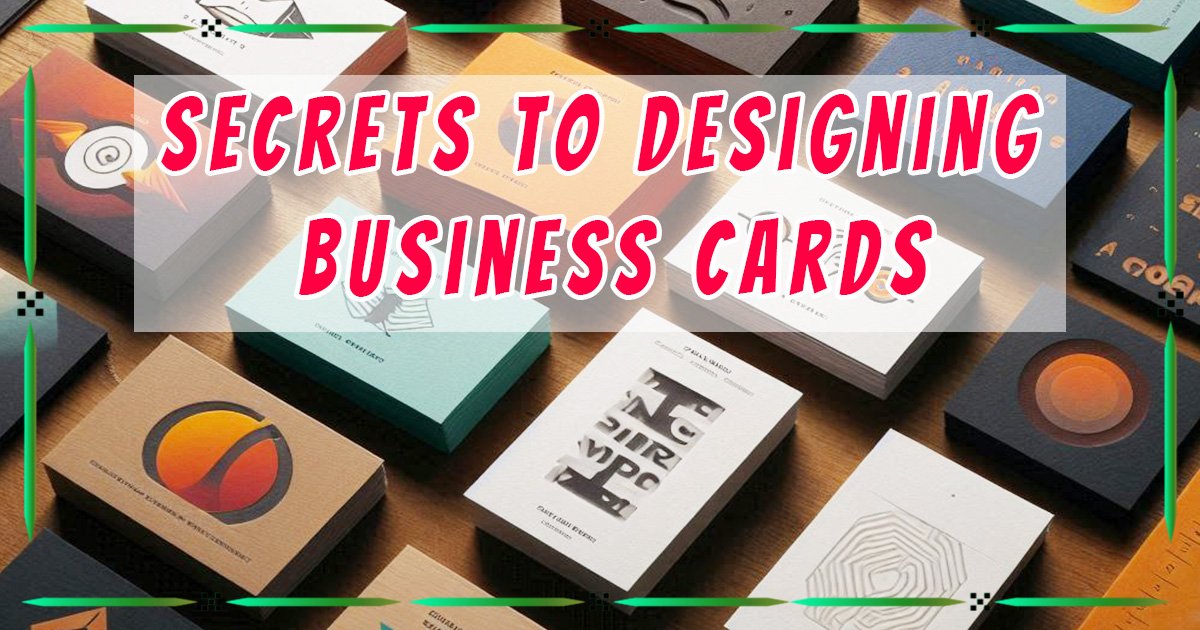Despite the surge in digital communication and online networking, business cards continue to be a vital component of professional interactions. They provide a swift and effective means of sharing contact details, leaving a physical reminder of your brand. For freelancers, small business owners, and corporate professionals alike, a well-crafted business card can distinguish you from your competitors. This post will delve into all aspects of business cards—from design and cost to their enduring relevance in today’s digital landscape. Additionally, we will address common questions about business cards to guide you in making an informed choice.
What Makes a Business Card Design Stand Out?
A business card is more than just a method of sharing contact information; it serves as an extension of your brand. A thoughtfully designed card can make a memorable impression on clients and partners. Key design elements include layout, color scheme, font choices, and logo placement. These components should harmonize with your brand’s identity.
Design ideas for business cards often emphasize simplicity and professionalism. Overloading the card with excessive information or intricate designs can make it appear cluttered. A clear, streamlined layout featuring essential details such as your name, company, job title, and contact information is most effective. Incorporating your company’s color scheme and logo enhances brand recognition.
Professional business cards generally use simple, legible fonts. Avoid ornate or complex fonts that can be difficult to read quickly. The font size should strike a balance—not too large, yet sufficiently visible to ensure clarity.
A crucial tip is to ensure that your card reflects your brand’s identity, whether it’s a cutting-edge tech firm or a creative design agency. This can be achieved through carefully chosen design elements that align with your business’s tone. For example, a graphic design studio might choose a vibrant and imaginative design, while a law firm would likely opt for a more refined and formal appearance.
Cost-Effective Business Cards: Balancing Price and Quality
The cost of business cards can vary significantly based on materials, finishes, and customization. Many small business owners and freelancers wonder, “What is the cost for 50 business cards?” Typically, 50 business cards can cost between $10 and $30, influenced by paper quality, design complexity, and additional features like embossing or foil stamping.
Affordable options can still appear professional if selected carefully. The type of paper has a major impact on card quality. Matte finishes offer a sophisticated look, while glossy cards are vibrant and reflective.
Although investing in business card printing can seem pricey, there are cost-effective choices available. Online printing services often provide discounts and bulk pricing, which is beneficial for larger orders. While cost is important, quality should not be sacrificed. Thin or flimsy cards can leave a negative impression, so finding a balance between affordability and quality is crucial. Even with a limited budget, you can obtain professional-looking business cards by opting for a simple design and standard paper options.
Custom vs. Pre-Made Business Cards: What Suits Your Needs?
Deciding between custom and pre-made business cards is a significant choice. Custom cards allow you to create a unique design tailored to your brand. You can select everything from paper stock and shape to font and layout. This level of customization ensures that your card stands out and makes a lasting impression. Custom cards also offer the possibility of adding special features such as embossing, custom shapes, or QR codes linking to your website or portfolio.
Conversely, pre-made business cards are often more budget-friendly and faster to produce. Most online printing services provide a range of templates that can be personalized with your details. While they might not be as unique as custom designs, pre-made cards are still a practical option for those needing affordable, professional cards quickly.
To discover more creative ideas and business solutions, visit Try Hard Guides for comprehensive advice and tips.
Which option is better? It depends on your business requirements and budget. Custom cards are ideal if you want to make a significant impact and have the resources for it. However, if you need a quick, cost-effective solution, pre-made templates offer a professional appearance.
The Enduring Relevance of Business Cards in the Digital Era
In a world dominated by smartphones, emails, and LinkedIn profiles, the relevance of business cards might be questioned. However, they continue to be a powerful tool in face-to-face networking, providing a tangible reminder of your brand long after the initial meeting. One of the key advantages is their ability to present contact information instantly, without the need to access digital devices.
Moreover, a well-designed business card can act as a subtle marketing tool. When handed out, it not only provides contact details but also leaves a representation of your brand. Whether at a networking event, meeting, or conference, business cards add a personal touch that digital methods often lack.
Business card marketing is also an effective way to promote your business. Cards can be distributed at local businesses, shared with potential clients, or included in product shipments. For freelancers and small business owners, a physical business card can effectively showcase your brand in professional settings.
Selecting the Right Business Card for Your Industry
The design of your business card should align with your industry. Corporate business cards in fields such as finance or law typically feature formal designs with minimal colors, clean fonts, and high-quality paper finishes. In contrast, creative industries like advertising or graphic design can benefit from more vibrant colors, unique textures, or unconventional shapes.
Industry expectations also influence card design. For instance, a tech startup might choose a sleek, modern card that highlights innovation, while a retail company might opt for a more colorful, eye-catching design.
The material of your card can also impact its perception. Some professionals select non-traditional materials like plastic or metal to stand out, while others prefer high-quality paper stock. The key is to choose a card that matches your industry while maintaining a professional appearance.
Comparing Digital and Traditional Business Cards
Digital business cards are gaining popularity due to technological advancements. These virtual cards can be shared via smartphone apps, QR codes, or email. They offer the advantage of being eco-friendly and easily updatable, with the ability to link directly to your social media profiles, websites, or portfolios for more detailed information.
However, traditional paper business cards still hold significant value. Many professionals prefer the tactile experience of a physical card, which can create a more personal connection, especially in industries where personal relationships are crucial.
The choice between paper and plastic cards also involves practicality versus creativity. Plastic cards are durable and resilient but can be less eco-friendly, while paper cards are more sustainable and often more cost-effective. Ultimately, whether you choose digital or traditional business cards depends on your business needs and how you wish to represent your brand.
Choosing the Right Business Card Printing Service
When selecting a business card printing service, consider several factors. The quality of printing and paper is paramount. Opt for services that offer high-resolution prints and premium paper options. Turnaround time is also important; some services provide same-day printing for urgent needs. Pricing is a key consideration, especially for small businesses.
Many online printers offer bulk discounts, which can be advantageous if you need a large quantity of cards. Be sure to read customer reviews to find a reliable service that balances quality and cost. Additionally, ensure the service offers the level of customization you require, whether you are opting for custom designs or pre-made templates.
For more tips on creating effective business cards, check out this detailed guide by Vistaprint, a leading online printing service offering customizable business cards for professionals.
The Importance of Business Cards for Employees
Companies continue to invest in business cards for their employees because they remain a crucial tool for professional networking. Business cards provide a quick way for employees to share their contact details and create a professional first impression, particularly in networking-intensive fields like sales, marketing, and consulting.
Business cards also help maintain brand consistency. Providing employees with custom-designed cards that align with the company’s branding ensures uniform messaging across all professional interactions. Additionally, business cards serve as marketing tools, spreading awareness of the company whenever they are distributed.
Conclusion
In summary, business cards are an essential tool for networking and brand representation, even in a digital age. Whether you opt for a custom design or a more affordable option, your business card remains a physical reminder of your brand. By choosing the right design, material, and printing service, you can create a card that leaves a lasting impression on clients and business contacts.
FAQs
1. What should be included on a business card?
A business card should feature your name, job title, company name, contact information, and a logo.
2. How many business cards should I order?
The quantity depends on usage. For small businesses, ordering between 100 and 250 cards annually is generally sufficient.
3. Can I print business cards at home?
Yes, but professionally printed cards usually offer better quality and durability.
4. Are digital business cards effective?
Yes, digital cards are convenient and eco-friendly but may lack the personal touch of traditional cards.
5. How do I choose the best paper for business cards?
Select based on your brand’s image. Matte paper offers a professional appearance, while glossy paper is vibrant and attention-grabbing.

I’m Emma Rose, the founder of tryhardguides.co.uk, and a content creator with a passion for writing across multiple niches—including health, lifestyle, tech, career, and personal development. I love turning complex ideas into relatable, easy-to-digest content that helps people learn, grow, and stay inspired. Whether I’m sharing practical tips or diving into thought-provoking topics, my goal is always to add real value and connect with readers on a deeper level.
Discover more from Try Hard Guides
Subscribe to get the latest posts sent to your email.

